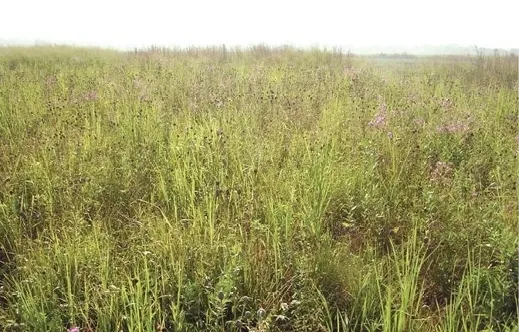
Grasses are the Rockstars of Photosynthesis
April 29, 2024
In the world of photosynthesis, grasses are the rockstars. Although everyone is now thinking about carbon sequestration in terms of mechanical capture technology, the process of photosynthesis in plants (from green algae to flowering plants to pine trees) has provided the carbon for life on Earth for at least the last 2.7 billion years. Photosynthesis converts carbon dioxide to carbohydrates that build plant tissue and produce our food and also leads to exudates that build carbon in the soil. Photosynthesis is what we are focusing on in examining the potential for carbon sequestration in urban landscapes!
Why are the grasses the rockstars of photosynthesis, you may wonder. Most of the history of photosynthesis on earth has been dominated by C3 photosynthesis, so-called because its first products have 3 carbon atoms. But between 25 and 32 million years ago, tropical grasses evolved an innovation in the form of a solar-powered carbon dioxide pump which boosts photosynthesis under hot and dry conditions. The C3 photosynthetic pathway has a “glitch” in that the enzyme that “fixes” atmospheric carbon dioxide into carbohydrates (6 carbon sugars) also binds oxygen to form a toxic byproduct that must be released. C4 plants have two advantages: they have a carbon dioxide-concentrating pump that makes their photosynthesis much more efficient and also have modified leaf anatomy that keeps their stomata’s pores more protected from water vapor loss (Sage, 2004). Consequently, C4 plants are 30-50% more efficient at photosynthesis and also more drought-tolerant and water efficient due to less water vapor loss.
Worldwide, C4 plants are responsible for 25-30% of all global carbon drawdown, despite representing only 3% of land plants (Osborne and Berlinger, 2006). The C4 pathway is very important to food crops AND also has tremendous potential for carbon sequestration in urban landscapes because warm season grasses utilize this pathway. Our seed mixes for polyculture lawns contain a mix of perennial and annual primarily native plants and include a good representation of C4 native grasses. For existing warm season lawns such as Zoysia or St Augustine, overseeding with our mix adds even more C4 species as well as diversity for soil health and water conservation.

RIPE Project Credit: March 18, 2020
Scientists are working hard to improve photosynthesis in both C3 and C4 plants to ensure greater food security under future climate scenarios (Meacham-Hensold and Nguyen, 2020). Having a mix of perennials, annuals, C3 and C4 plants provides resilience and optimal potential for significant carbon sequestration in urban landscapes!
Reach out to our team to find out more about polyculture lawns and potentially become part of our demonstration garden project!
References:
Meacham-Hensold and Nguyen, A., 2020. The Difference Between C3 and C4 Plants. The RIPE Project Blog March 18, 2020.
ripe.illinois.edu/blog/differencebetween-c3-and-c4-plants
Osborne, C.P., and Berlinger, D.J. 2006. Nature’s Green Revolution: The Evolutionary Rise of C4 Plants. Philos Trans R Soc Lond B Biol Sci 361(1465): 173-194.
Sage, R.F., 2004. The Evolution of C4 Photosynthesis. The New Phytologist 161(2): 341-370.
Tags:
